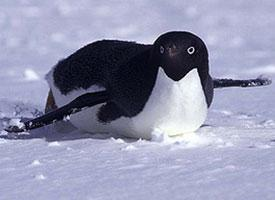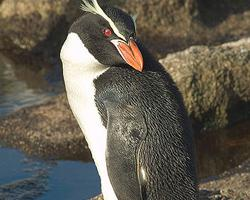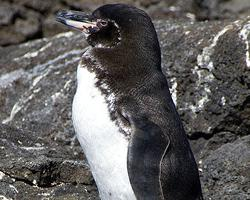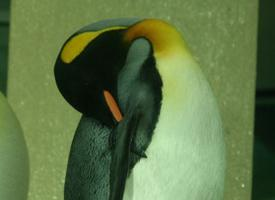
Váhy a míry
| Výška v kohoutku | 95 cm |
|---|---|
| Hmotnost | 21 kg |
Popis zvířete
The King Penguin (Aptenodytes patagonicus) is a majestic and striking bird, second only in size to the Emperor Penguin within the penguin family. Inhabiting the cold and remote waters of the Southern Atlantic and Indian Oceans, particularly around sub-Antarctic islands, this species has adapted remarkably to thrive in harsh, frigid environments.Adult King Penguins stand out for their impressive size, reaching up to 95 cm (37 inches) in height and weighing between 11 to 16 kg (24 to 35 lbs), though weights can vary significantly throughout the seasons due to feeding and fasting periods. Their physical appearance is distinguished by a vivid color palette and unique markings. The back and flippers are a sleek, dark grey, while the front is predominantly a bright, creamy white. The bird's standout features are its striking orange patches on the sides of its head, which extend down the neck and blend into a lighter peach color on the chest. This distinctive coloration not only adds to their regal appearance but also plays a role in social interactions and mate selection.
King Penguins have a highly structured social life and are known for forming large, densely packed colonies when they come ashore to breed and molt. These colonies can number in the tens of thousands, creating a bustling community of birds. Despite the crowded conditions, penguins exhibit a remarkable degree of order, with individual birds able to navigate through the masses to find their own nests or partners with vocal calls unique to each penguin.
Breeding is a prolonged affair for King Penguins, taking over a year from laying to fledging. Unlike most birds, they lay a single, large egg, which is incubated on the tops of their feet under a flap of abdominal skin called a brood patch. Both parents share incubation duties in shifts lasting around two weeks. This unique method of egg care allows the penguins to keep the egg at a constant warm temperature, even in freezing conditions.
King Penguins are superb swimmers, adapted to an aquatic life where they spend the majority of their time. Their streamlined bodies and powerful flippers allow them to reach speeds of up to 12 km/h (7.5 mph) and dive to depths of over 300 meters (984 feet) in search of food. Their diet consists mainly of small fish, squid, and crustaceans. The ability to dive deep is crucial for reaching prey that live in the cold, nutrient-rich waters.
Conservation status of the King Penguin is currently classified as of least concern, indicating a stable population. However, like many species, they face threats from climate change and human activity, such as pollution and fishing, which can affect their food supply. Conservation efforts focus on protecting their natural habitats and ensuring sustainable fishing practices to secure the future of these remarkable birds.
In summary, the King Penguin is a fascinating creature, perfectly adapted to its environment. Its striking appearance, complex social structure, and impressive diving abilities make it one of the most interesting and iconic inhabitants of the sub-Antarctic region.
Mapa výskytu
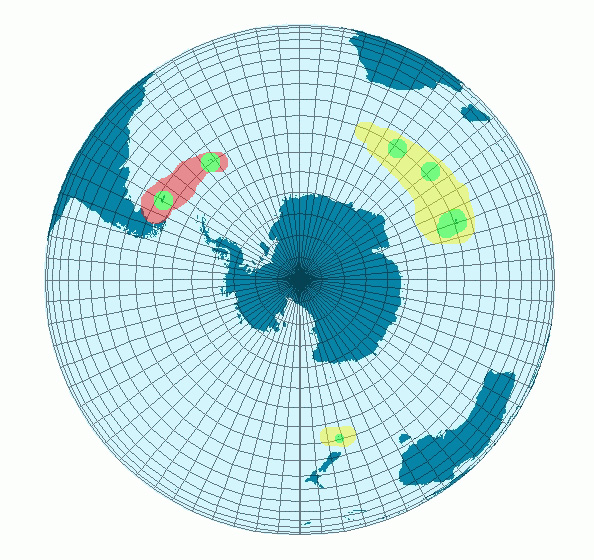
Podobná zvířata
Nové fotografie zvířat
Top 10 zvířat
- Chinese water dragon (Physignathus cocincinus)
- Galápagos tortoise (Geochelone nigra complex)
- Dolphin gull (Leucophaeus scoresbii)
- Japanese macaque (Macaca fuscata)
- Colombian red howler (Alouatta seniculus)
- Sea urchins (Echinoidea)
- Moustached guenon (Cercopithecus cephus)
- Diana monkey (Cercopithecus diana)
- Common reed warbler (Acrocephalus scirpaceus)
- Common house mosquito (Culex pipiens)
